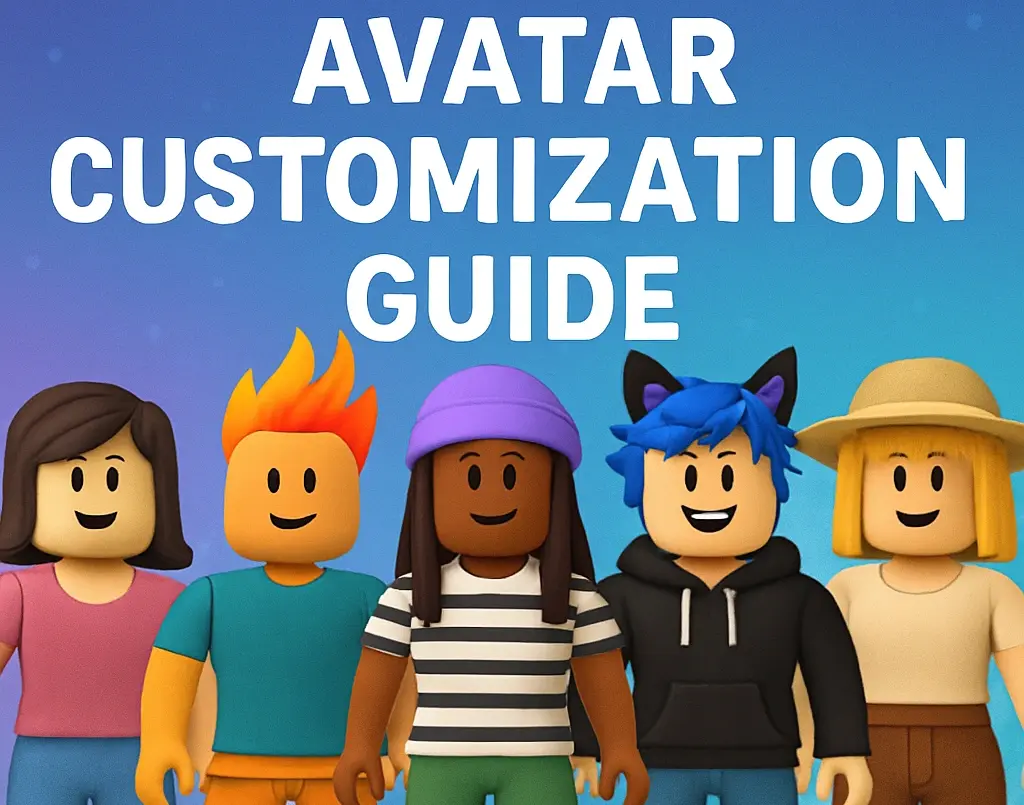Roblox avatars have evolved from the block-classic R6 model to the expressive, 15-joint R15 system. Developers and players now juggle nostalgia, performance, and customization when selecting which avatar type to enable. This article compares R6 and R15 through the lens of animation complexity, gameplay fairness, and real-world adoption. By the end, you’ll know which rig aligns with your project goals—and you can sharpen your styling chops by exploring our Complete Avatar Styling Handbook.
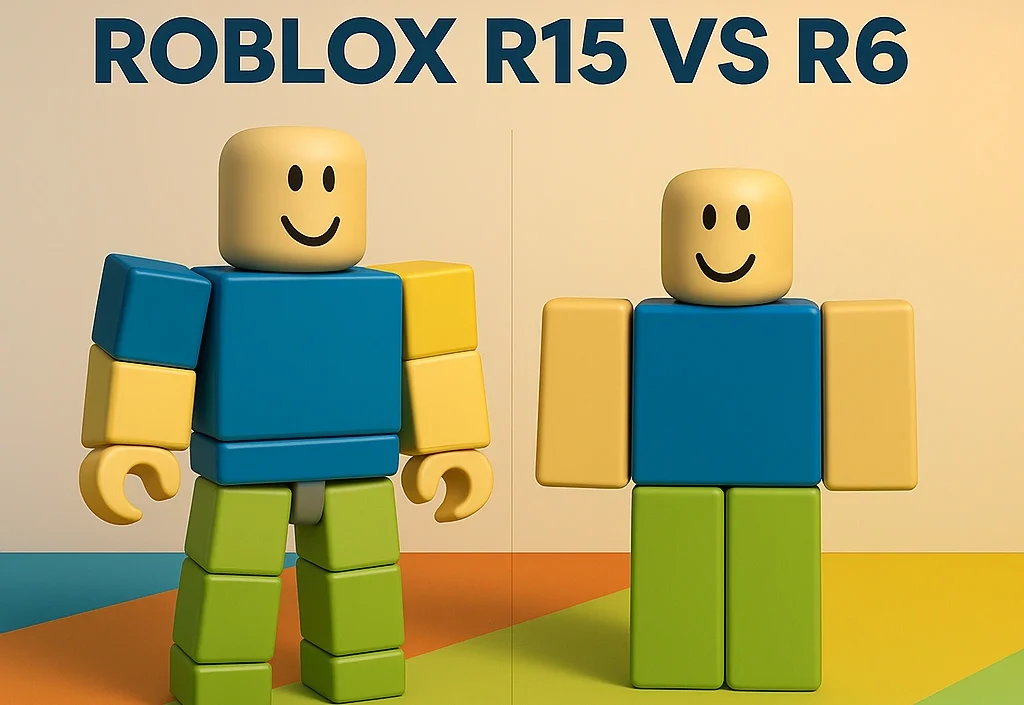
Table Of Contents
- 1 Understanding the Core Differences
- 2 Current Market Statistics and Trends
- 3 Performance and Technical Considerations
- 4 Animation Capabilities and Development Workflow
- 5 Customization and User-Generated Content
- 6 Implementation Strategies and Best Practices
- 7 Future Considerations and Platform Direction
- 8 Developer Implementation Guide
- 9 Market Analysis and Business Considerations
- 10 Common Implementation Challenges
- 11 Advanced Features and Future Technologies
- 12 Best Practices for Modern Development
- 13 Community Perspectives and Cultural Considerations
- 14 Conclusion
- 15 Frequently Asked Questions
Understanding the Core Differences
The fundamental distinction between R6 and R15 avatars lies in their structural complexity. R6 avatars feature six body parts: head, torso, left arm, right arm, left leg, and right leg, creating a simple blocky appearance that has defined classic Roblox aesthetics. In contrast, R15 avatars utilize 15 body parts, enabling more sophisticated animations and realistic proportions.
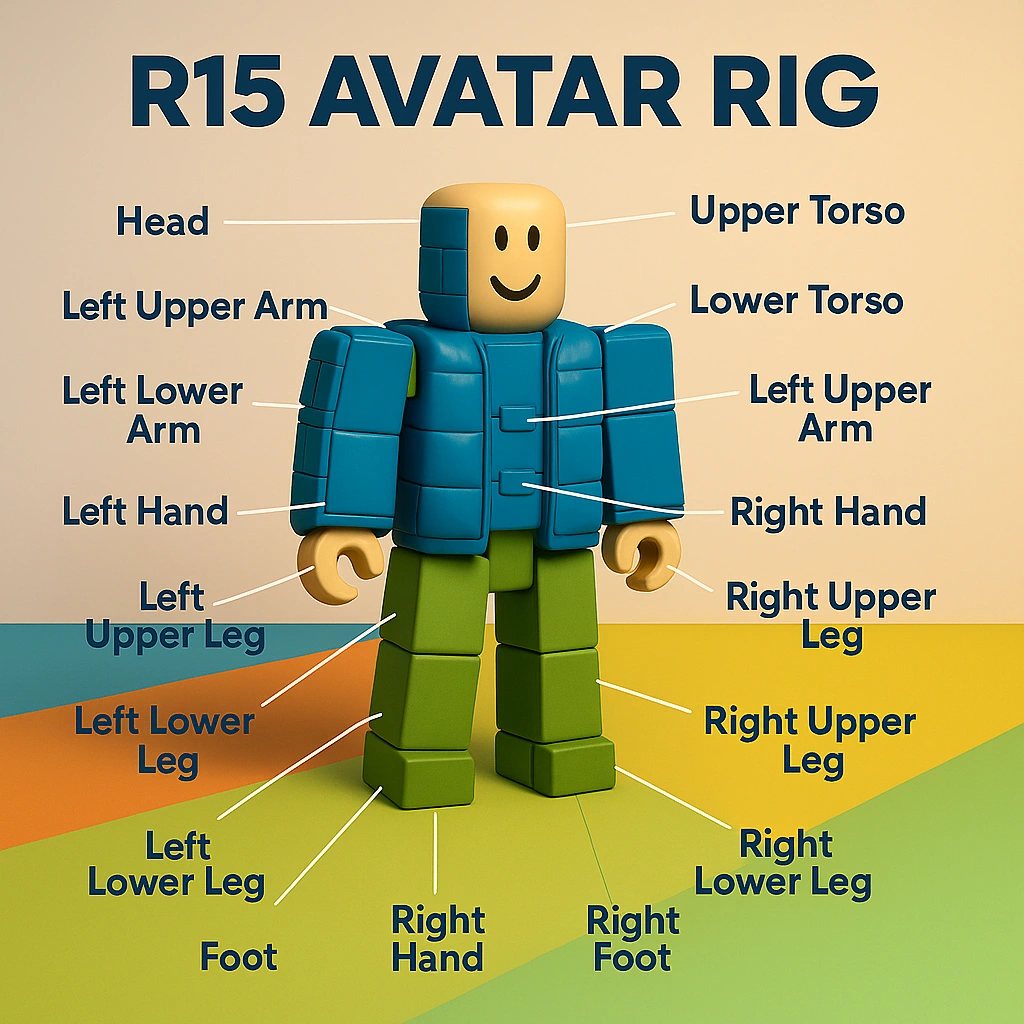
This structural difference extends beyond mere appearance. R15 avatars support advanced features like facial animation, layered clothing, and dynamic heads—technologies that have become integral to modern Roblox experiences3. Meanwhile, R6 maintains its appeal through simplicity, consistent hitboxes, and faster development cycles.
Current Market Statistics and Trends
The Roblox avatar ecosystem has experienced a dramatic shift toward R15 adoption. Current data reveals that approximately 98% of active users now utilize R15 avatars, while only 2% continue with R6. This transformation began in 2016 when Roblox established R15 as the default avatar system for new accounts.
| Metric | R15 | R6 |
|---|---|---|
| Share of active users | 98% | 2% |
| Default status | Yes (since 2016) | Deprecated |
| Session engagement increase | +40% vs R6 experiences | Baseline |
| Compatible with layered clothing | Yes | No |
| Facial animation support | Yes | No |
The engagement statistics are particularly telling. Games that exclusively support R15 avatars experience 40% longer session times compared to R6-only experiences. This suggests that users find R15’s enhanced expressiveness and customization options more compelling for extended gameplay.
Performance and Technical Considerations
Resource Usage and Optimization
Performance differences between R6 and R15 have been a persistent concern among developers. R6 avatars consume fewer polygons and require less processing power, making them theoretically superior for resource-constrained environments. However, practical testing reveals that the performance gap has narrowed significantly.
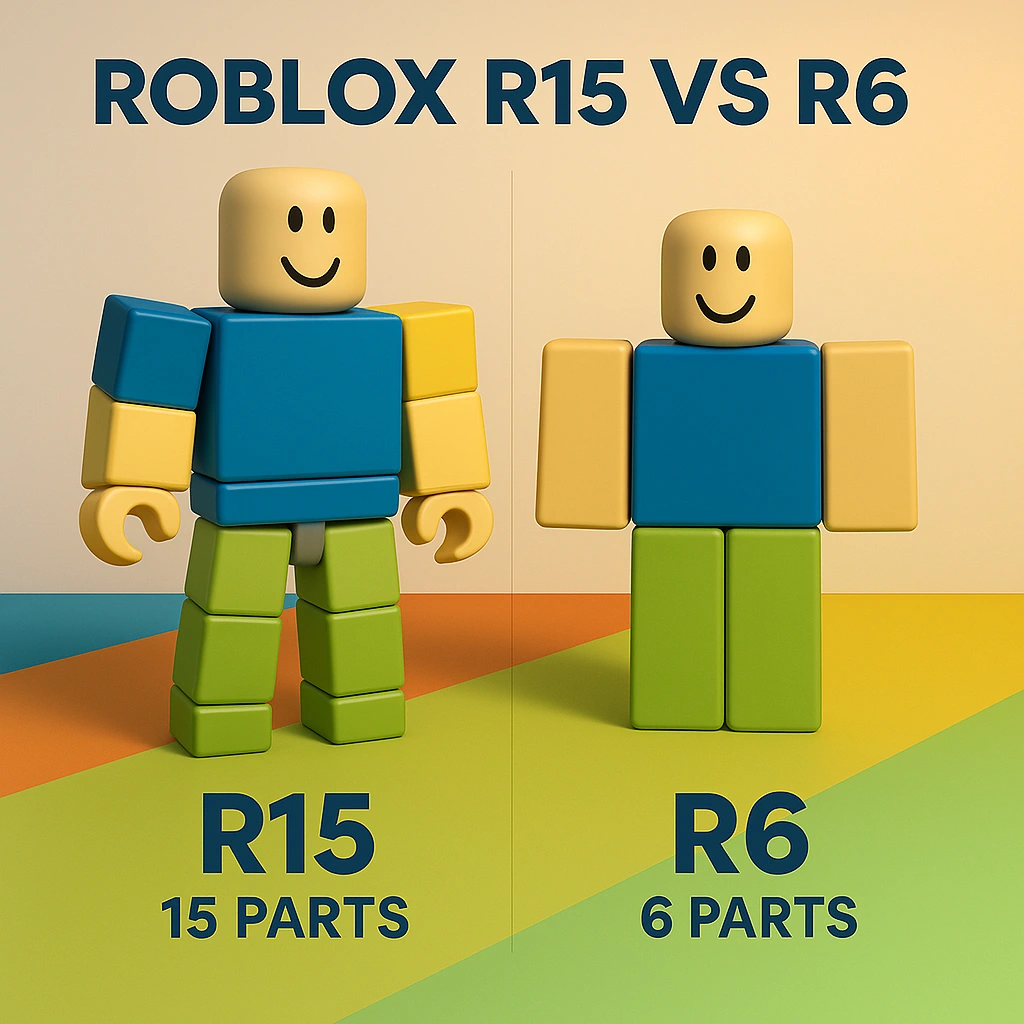
Recent developer feedback indicates that R15’s performance impact amounts to approximately 0.001 FPS reduction compared to R6. This minimal difference means that for most modern devices and well-optimized games, the performance argument for choosing R6 has largely diminished.
Hitbox and Competitive Considerations
Competitive gaming scenarios present unique considerations for avatar selection. R6 avatars offer consistent, predictable hitboxes that many developers prefer for fair gameplay mechanics. The uniform sizing eliminates potential advantages or disadvantages based on avatar scaling, which can occur with R15’s more flexible proportioning system.
However, R15 includes adapter technologies that can emulate R6-style hitboxes while maintaining visual fidelity. This hybrid approach allows developers to preserve competitive balance without sacrificing the enhanced customization options that engage modern players.
Animation Capabilities and Development Workflow
R6 Animation Advantages
R6’s six-joint structure significantly reduces animation complexity. Developers report that R6 animations require 2-3 times fewer keyframes than their R15 counterparts, accelerating the development process. This simplicity makes R6 particularly attractive for rapid prototyping and games where sophisticated character animation isn’t essential.
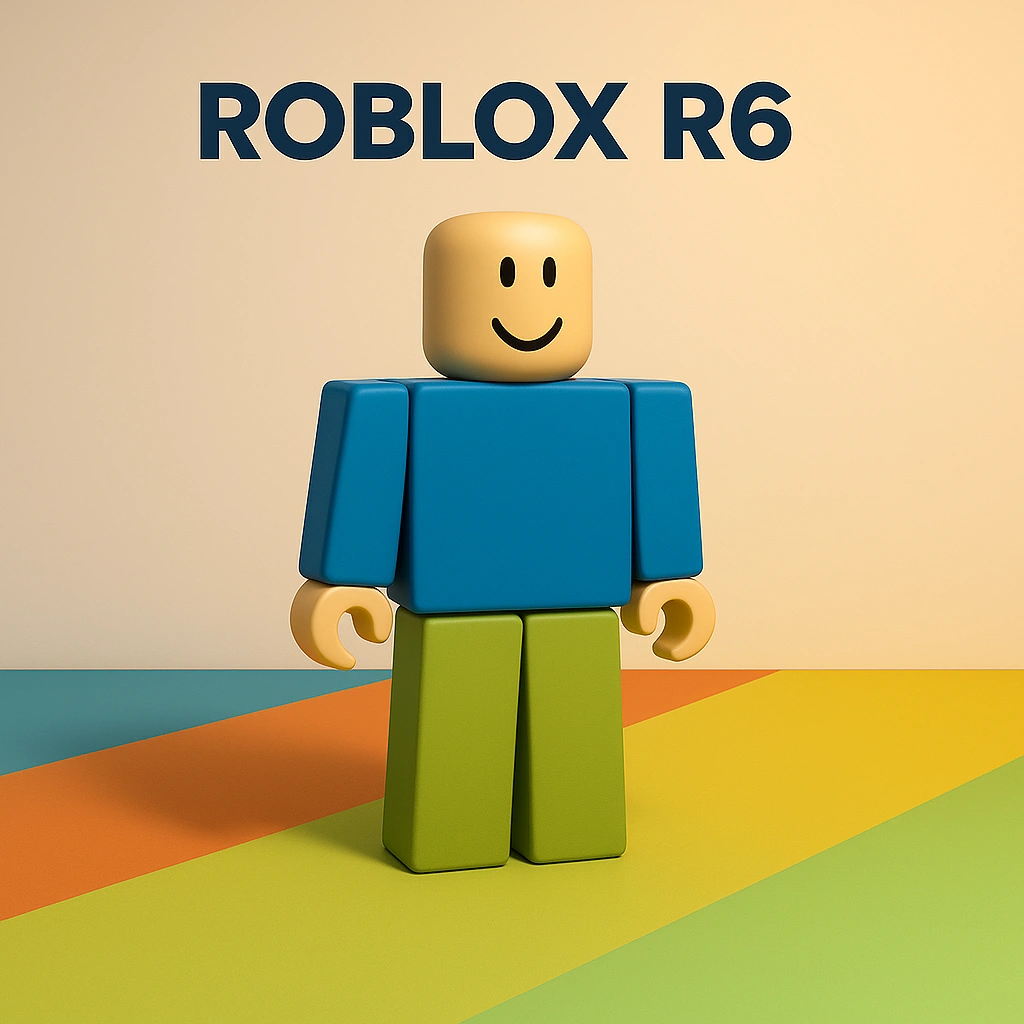
The streamlined approach also benefits novice animators who might find R15’s 15-joint system overwhelming. Simple walk cycles, jump animations, and basic gestures can be implemented quickly without requiring extensive animation expertise.
R15 Animation Capabilities
R15’s expanded joint system enables sophisticated animations including facial expressions, complex gestures, and smooth transitions between movement states. The system supports FACS (Facial Action Coding System) poses, enabling realistic facial animation and avatar chat functionality.
Modern R15 implementations also support animation packs that can dramatically alter character movement patterns. However, these packs can sometimes interfere with gameplay mechanics, particularly in competitive or precision-based games.
Customization and User-Generated Content
Layered Clothing Revolution
One of R15’s most significant advantages lies in its compatibility with layered clothing—3D garments that dynamically fit over avatar bodies and other clothing items6. This technology, introduced in 2022, has revolutionized avatar customization by allowing multiple clothing layers without clipping issues.
Layered clothing requires R15’s advanced cage system, which creates invisible boundaries that ensure proper clothing fit across different body types6. This system is incompatible with R6’s simpler structure, effectively making layered clothing an R15-exclusive feature6.
UGC and Marketplace Integration
The Roblox marketplace increasingly focuses on R15-compatible assets. New dynamic heads, advanced body packages, and premium UGC items predominantly target R15 users. This trend reflects both user preference and technical necessity, as many modern customization features require R15’s advanced framework.
Creators developing UGC items must consider that R6 compatibility limits their potential audience to approximately 2% of active users, significantly impacting revenue potential.
Implementation Strategies and Best Practices
Choosing the Right Approach
Game developers should align their avatar choice with their project’s core objectives:
R15 is optimal when:
- The game emphasizes social interaction and avatar expression
- Layered clothing and advanced customization are desired features6
- Target audience consists primarily of newer players (who default to R15)
- Long-term marketplace integration is planned13
R6 remains preferable for:
- Competitive gaming scenarios requiring consistent hitboxes
- Rapid development cycles with simple animation requirements
- Retro-themed experiences targeting nostalgic players
- Resource-constrained environments where every polygon matters
Hybrid Implementation
For developers uncertain about commitment to either system, hybrid approaches offer flexibility. The R6-to-R15 adapter allows games to maintain R6 gameplay mechanics while accommodating R15 visual features. This strategy enables broader user compatibility without sacrificing core gameplay balance.
Future Considerations and Platform Direction
Roblox’s Strategic Direction
Roblox Corporation has clearly signaled its commitment to R15 as the platform’s future. While R6 isn’t scheduled for immediate removal, it has been officially marked as “deprecated,” meaning it receives minimal ongoing development attention.
The company’s recent investments in AI-powered avatar creation tools, advanced facial animation systems, and layered clothing technology all focus exclusively on R15 implementation. This pattern suggests that new avatar features will continue prioritizing R15 compatibility.
Migration Timeline
Industry observers note that R6’s decline follows a natural deprecation cycle similar to outdated software systems. While some developers and players maintain R6 preferences, the ecosystem increasingly favors R15 through:
- Default R15 assignment for new accounts
- R15-exclusive feature development
- Marketplace emphasis on R15-compatible assets
- Community momentum toward modern avatar technologies
Developer Implementation Guide
Setting Up R15 Experiences
Implementing R15 support requires several configuration steps:
- Navigate to Game Settings in Roblox Studio
- Select the Avatar tab
- Set Avatar Type to “R15”
- Configure layered clothing compatibility if desired
- Test animations and ensure proper scaling behavior
Setting Up R6 Experiences
For R6 implementation:
- Access Game Settings in Roblox Studio
- Select the Avatar tab
- Set Avatar Type to “R6”
- Verify hitbox consistency across different scenarios
- Consider implementing R6-to-R15 adapter for future flexibility
Market Analysis and Business Considerations
Revenue and Engagement Impact
Games supporting R15 avatars demonstrate superior monetization potential through several mechanisms:
- Extended Session Duration: 40% longer average play sessions compared to R6-only games
- Higher Customization Spending: Access to layered clothing and premium UGC increases per-user revenue
- Broader Market Reach: 98% of active users can fully engage with R15 experiences
Competitive Landscape Analysis
Popular Roblox games increasingly adopt R15 as the standard:
- Social simulation games universally support R15 for customization features
- Role-playing experiences leverage R15’s animation capabilities for immersive storytelling
- Even traditionally R6-focused genres like obstacle courses gradually migrate to hybrid models
Common Implementation Challenges
Performance Optimization
Despite minimal performance differences, developers should consider optimization strategies:
- Joint Culling: Disable collision detection on invisible joints to reduce physics overhead
- Animation Efficiency: Cache frequently-used animations to minimize real-time calculations
- LOD Systems: Implement level-of-detail reduction for distant avatars
Cross-Platform Compatibility
Mobile devices represent Roblox’s largest user segment, requiring special consideration for avatar choice. While R15’s performance impact is negligible on modern devices, older mobile hardware may benefit from R6’s reduced complexity.
Advanced Features and Future Technologies
Facial Animation and Avatar Chat
R15’s support for FACS poses enables sophisticated facial animation systems that enhance user communication. The technology supports:
- Real-time lip synchronization for avatar chat
- Emotional expression through facial animation
- Advanced camera-based facial tracking (in development)
These features represent significant competitive advantages for social experiences and virtual events.
AI-Powered Avatar Creation
Roblox’s recent introduction of Avatar Auto Setup uses machine learning to automatically rig, weight, and configure custom avatar models. This technology exclusively targets R15 compatibility, further emphasizing the platform’s strategic direction.
The system can process humanoid-shaped models and automatically add:
- R15 armature and rigging
- Skinning weights for natural movement
- Facial animation capabilities
- Layered clothing compatibility
Best Practices for Modern Development
User Experience Optimization
Modern Roblox development should prioritize user experience over technical preferences. Consider these UX factors:
- Avatar Investment: Users spend significant time and money customizing R15 avatars
- Social Integration: R15’s expression features enhance multiplayer communication
- Platform Consistency: R15 alignment with Roblox’s default creates seamless experiences
Future-Proofing Strategies
Developers should prepare for continued platform evolution:
- Modular Avatar Systems: Design games to accommodate future avatar technologies
- Animation Flexibility: Create animation systems compatible with both current and future joint structures
- Asset Pipeline Optimization: Streamline workflows for R15 asset creation and integration
Community Perspectives and Cultural Considerations
Nostalgia vs. Innovation
The R6 vs. R15 debate often centers on nostalgia for classic Roblox aesthetics versus embrace of modern capabilities. Long-time players may prefer R6’s iconic blocky appearance, while newer users gravitate toward R15’s sophisticated features.
Successful games often acknowledge this divide by:
- Offering visual style options that honor both aesthetics
- Implementing R6-style animations on R15 rigs for familiar feel
- Creating themed experiences that celebrate different eras of Roblox history
Global Market Considerations
Roblox’s international expansion affects avatar choice considerations. Different regions show varying preferences for avatar customization depth:
- North American Users: High engagement with premium customization options
- European Players: Strong emphasis on social features and expression
- Asia-Pacific Region: Growing adoption of layered clothing and advanced avatars
Conclusion
The choice between R15 and R6 avatars ultimately depends on your specific project goals and target audience. R15’s dominance in user adoption (98% of active players), superior engagement metrics (+40% session duration), and exclusive access to modern features like layered clothing make it the clear choice for most new projects. The performance concerns that once favored R6 have largely been resolved through platform optimizations.
However, R6 retains relevance for competitive gaming scenarios where consistent hitboxes are crucial, rapid development projects requiring simple animations, and experiences targeting Roblox’s nostalgic community. The availability of R6-to-R15 adapters provides a middle ground for developers seeking flexibility.
Given Roblox Corporation’s clear strategic direction toward R15, new developers should strongly consider R15 as their primary choice while understanding when R6’s specific advantages might benefit their project. The platform’s future lies in enhanced avatar expression, customization, and social interaction—all areas where R15 excels.
Frequently Asked Questions
Q: Will Roblox completely remove R6 support?
A: No official removal timeline exists, but R6 is officially deprecated, meaning it receives minimal new features or updates. The R6-to-R15 adapter ensures continued gameplay compatibility even as the platform evolves.
Q: Does R15 always perform worse than R6?
A: The performance difference is negligible on modern devices—approximately 0.001 FPS reduction. The engagement benefits of R15 typically outweigh this minimal performance cost.
Q: Can I switch from R6 to R15 during development?
A: Yes, but expect increased animation workload (2-3x more keyframes required). Plan early or consider using adapter solutions to minimize disruption.
Q: Which avatar type works better for mobile players?
A: Both systems perform adequately on modern mobile devices. R15’s minimal performance impact is offset by significantly better user engagement and customization options.
Q: How do layered clothes affect game balance?
A: Layered clothing only affects visual appearance—hitboxes remain tied to the underlying body structure. R15’s standardized scaling helps maintain competitive fairness while enabling enhanced customization.
Q: What about animation packs interfering with gameplay?
A: Animation packs can affect gameplay mechanics in competitive scenarios. Developers can disable specific animation packs or implement systems that override them for consistent gameplay.
Q: Is it worth learning R6 animation for new developers?
A: While R6 animation is simpler, new developers should focus on R15 skills given the platform’s direction and market demand. R6 knowledge can supplement R15 expertise but shouldn’t be the primary focus.

